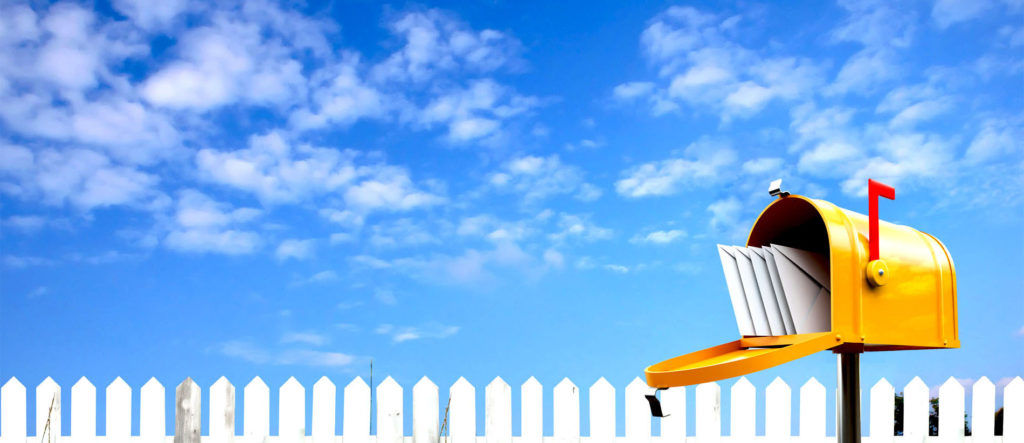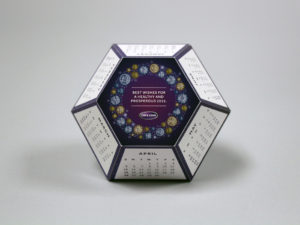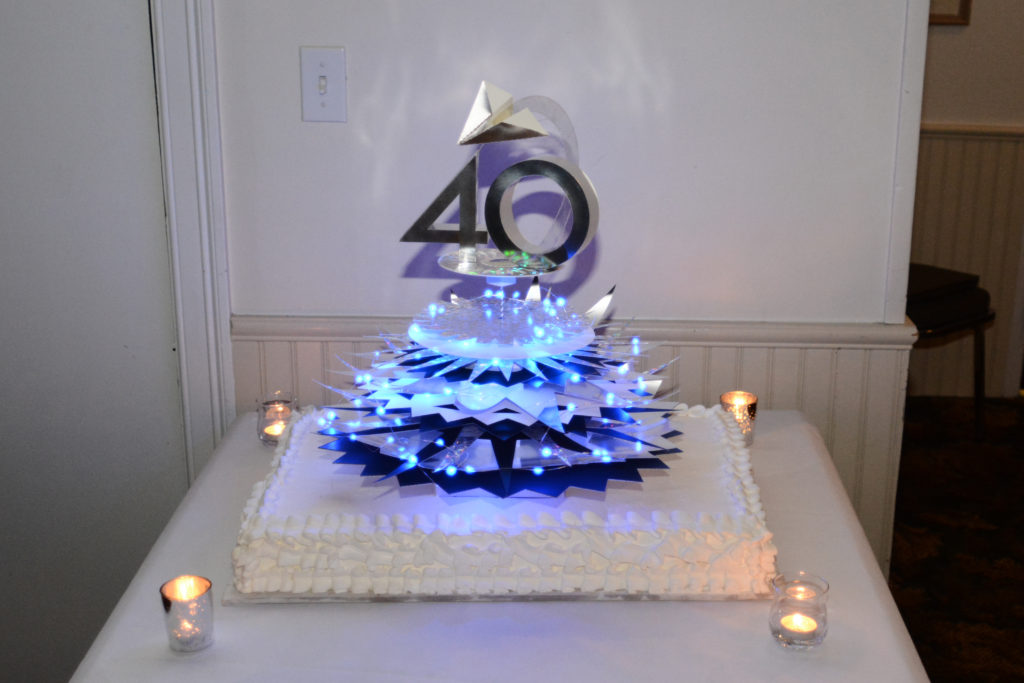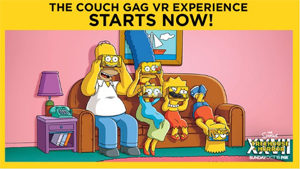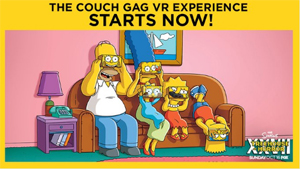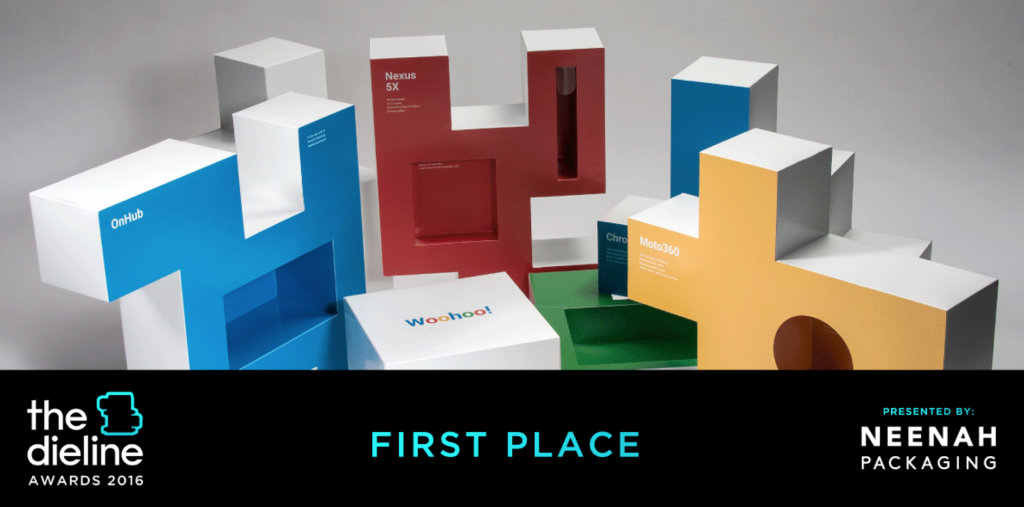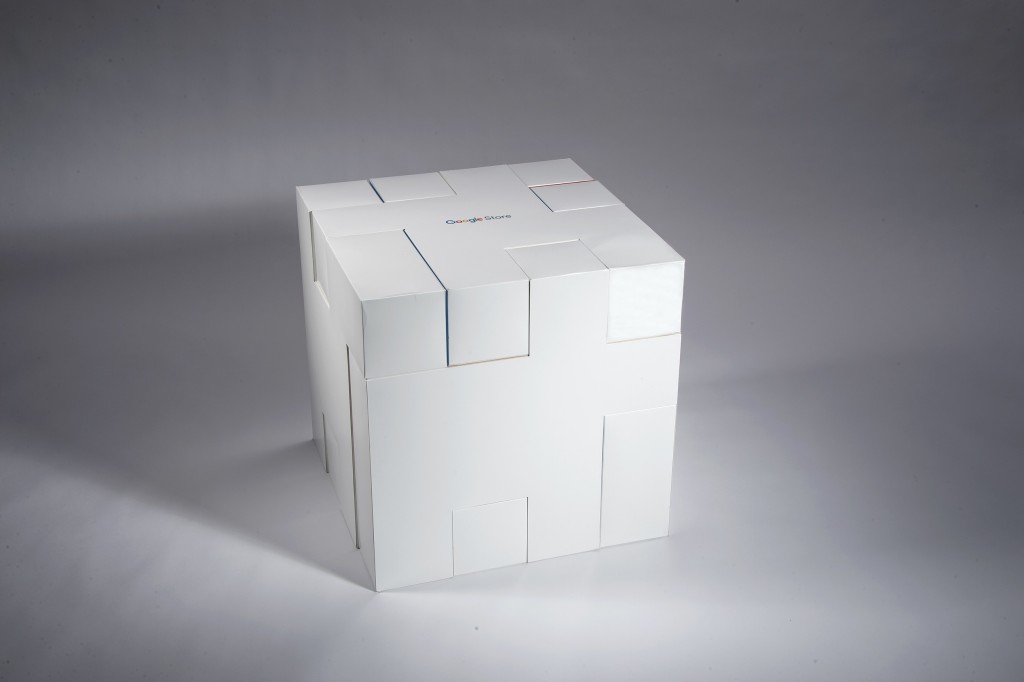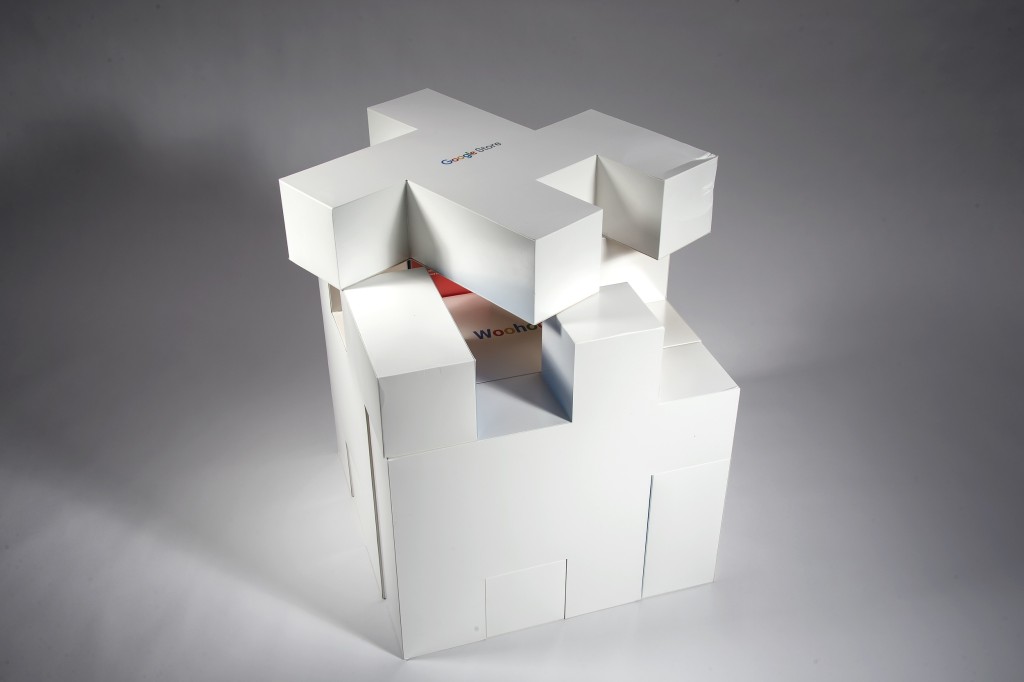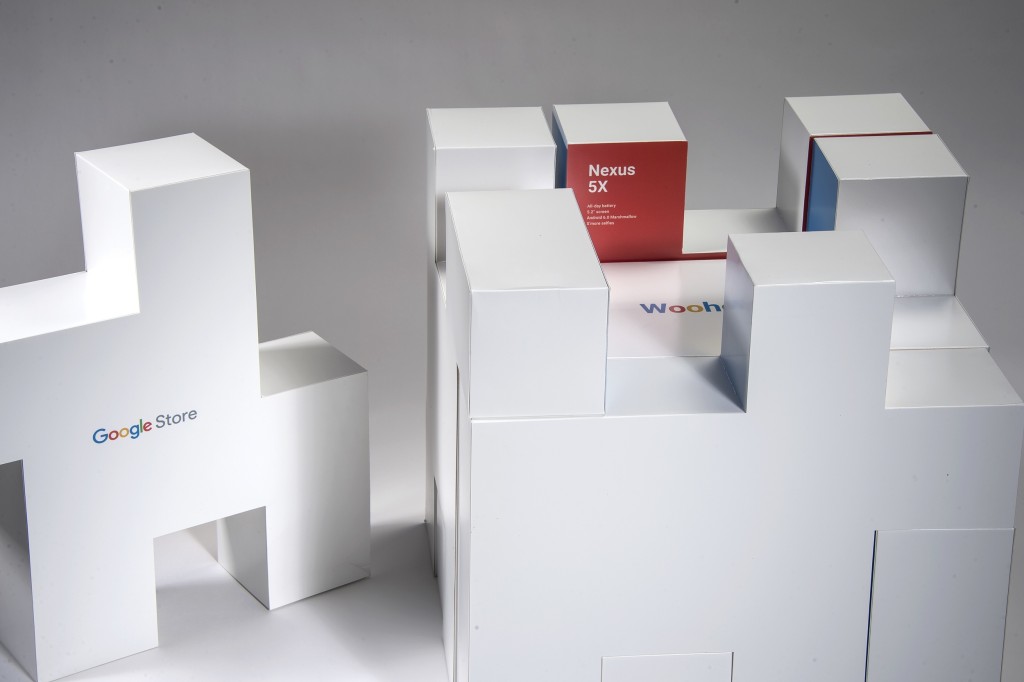“If a picture paints 1,000 words then one minute of video is worth 1.8 million.”
– Dr James McQuivey, Principal Analyst at Forrester Research
Within the last decade or so, the marketing landscape has changed tremendously. Traditional outreach in the form of catalogues and printed post cards has given way to email blasts and digital ads as consumers increasingly spend their time online.
This change in consumer behavior means that we, as marketers, must also alter the way in which we produce content for the companies and the brands we represent. Not only do we need to be more intentional with the stories we tell, but we must become more strategic in how we tell them.
Research shows that printed collateral continues to be a compelling and successful way to capture the attention of your target audience. However, when coupled with video, print has the capability to not only gain consumers’ attention, but also to hold it.
The statistics are there:
- 70% of marketing professionals report that video converts better than any other medium (CodeFuel)
- 90% of customers report that product videos help them make purchasing decisions (HubSpot)
- On Facebook, video posts have 135% greater organic reach than photo posts (Social Media Examiner)
- 76% of companies who have used videos in the past year report a direct business impact (AdWeek)
With the blurring pace of modern society, video is one of the few types of mediums that caters to the consumers of today, while still providing the value, relevance and trackable metrics marketing professionals are after. But how can we merge the strengths of print with those of video to create a singular high-impact marketing tool?
Our video-in-print brochures offer an effective option when it comes to getting your company noticed. One of the biggest advantages of combining these two mediums is the ability to enhance your brand messaging through engaging and supporting content. Video is highly visual and auditory, which means it’s easier for people to remember than text-based content. When consumers remember your video content, they, in turn, remember your brand. This can translate into better brand loyalty as well as more sales and leads.
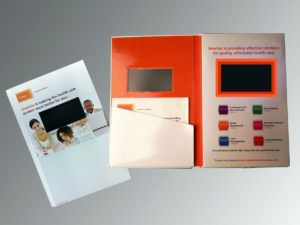 Aetna used this dynamic video brochure to send information about its “smarter” healthcare solutions to consumers. The inside of the brochure featured a video screen with 6 buttons underneath it. By pressing each button, consumers could watch a video and learn more about each of the different solutions offered by Aetna.
Aetna used this dynamic video brochure to send information about its “smarter” healthcare solutions to consumers. The inside of the brochure featured a video screen with 6 buttons underneath it. By pressing each button, consumers could watch a video and learn more about each of the different solutions offered by Aetna.
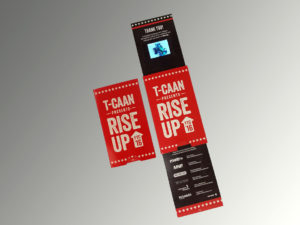 T-CAAN is one of Canada’s oldest and most extensive networks of independent advertising, marketing and communication agencies. Information Packaging of Canada used this video handout at a recent T-CAAN event in Calgary. The mechanism they used was the Extendo. When you pull out the bottom panel, another panel automatically slides out from the top featuring a video about Information Packaging.
T-CAAN is one of Canada’s oldest and most extensive networks of independent advertising, marketing and communication agencies. Information Packaging of Canada used this video handout at a recent T-CAAN event in Calgary. The mechanism they used was the Extendo. When you pull out the bottom panel, another panel automatically slides out from the top featuring a video about Information Packaging.
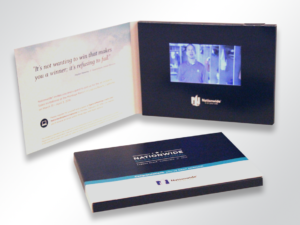 Nationwide Financial went “all out” and used this video invitation for its 2016 Nationwide Sales Invitational, a high-end event that rewards an elite group of advisors for their life and annuity sales volume and sales potential with Nationwide. The inside of this elegant mailer featured a video about the event complete with play/pause and volume controls.
Nationwide Financial went “all out” and used this video invitation for its 2016 Nationwide Sales Invitational, a high-end event that rewards an elite group of advisors for their life and annuity sales volume and sales potential with Nationwide. The inside of this elegant mailer featured a video about the event complete with play/pause and volume controls.
What are you waiting for? Get in touch and let’s figure out how to take your marketing to the next level.
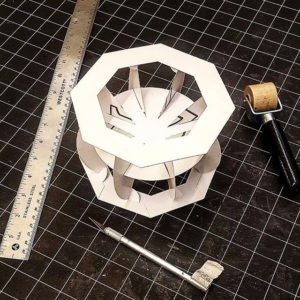
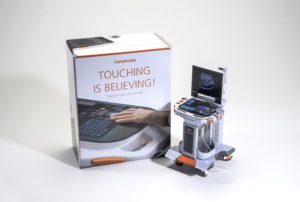
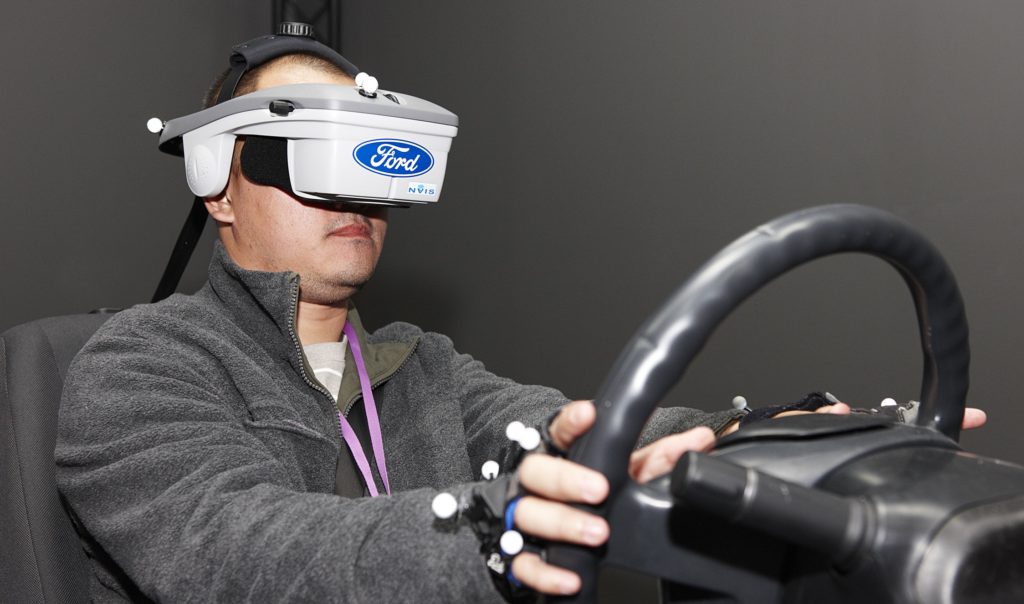
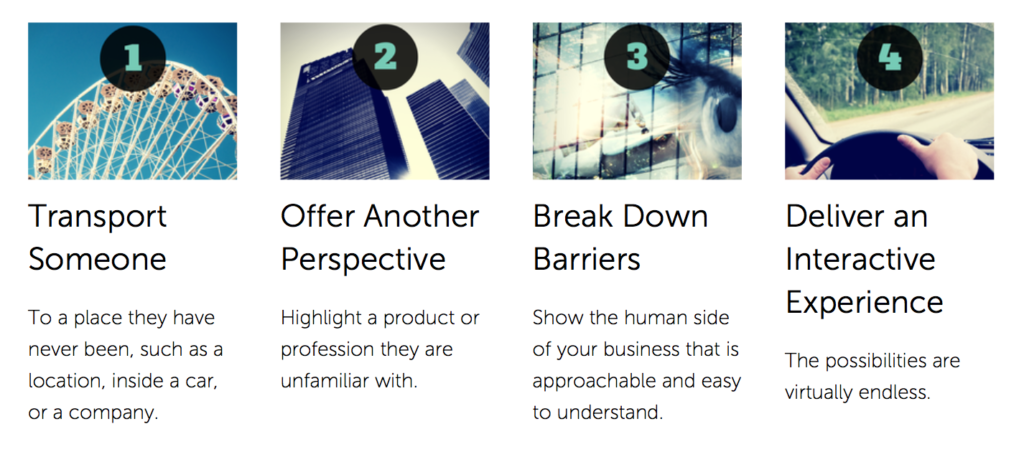 How are Virtual Reality Headsets Different Today?
How are Virtual Reality Headsets Different Today?
 Aetna used this dynamic video brochure to send information about its “smarter” healthcare solutions to consumers. The inside of the brochure featured a video screen with 6 buttons underneath it. By pressing each button, consumers could watch a video and learn more about each of the different solutions offered by Aetna.
Aetna used this dynamic video brochure to send information about its “smarter” healthcare solutions to consumers. The inside of the brochure featured a video screen with 6 buttons underneath it. By pressing each button, consumers could watch a video and learn more about each of the different solutions offered by Aetna. T-CAAN is one of Canada’s oldest and most extensive networks of independent advertising, marketing and communication agencies. Information Packaging of Canada used this video handout at a recent T-CAAN event in Calgary. The mechanism they used was the Extendo. When you pull out the bottom panel, another panel automatically slides out from the top featuring a video about Information Packaging.
T-CAAN is one of Canada’s oldest and most extensive networks of independent advertising, marketing and communication agencies. Information Packaging of Canada used this video handout at a recent T-CAAN event in Calgary. The mechanism they used was the Extendo. When you pull out the bottom panel, another panel automatically slides out from the top featuring a video about Information Packaging. Nationwide Financial went “all out” and used this video invitation for its 2016 Nationwide Sales Invitational, a high-end event that rewards an elite group of advisors for their life and annuity sales volume and sales potential with Nationwide. The inside of this elegant mailer featured a video about the event complete with play/pause and volume controls.
Nationwide Financial went “all out” and used this video invitation for its 2016 Nationwide Sales Invitational, a high-end event that rewards an elite group of advisors for their life and annuity sales volume and sales potential with Nationwide. The inside of this elegant mailer featured a video about the event complete with play/pause and volume controls.